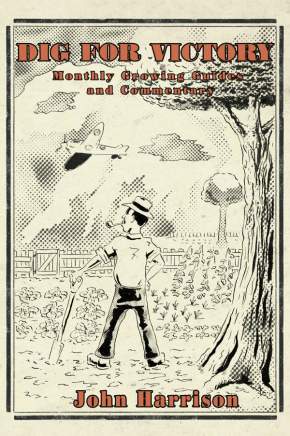If you remember that one-tenth of your pea and bean crop should give you sufficient seed to sow a similar area again next year, you will be able to judge how many plants to leave.
 Most allotment rows are 30 ft. long, so of your peas you would need to have 3 ft. at one end of the row. Runner beans are usually a little more prolific, so one-twentieth of each row is usually enough to save for next year’s sowing.
Most allotment rows are 30 ft. long, so of your peas you would need to have 3 ft. at one end of the row. Runner beans are usually a little more prolific, so one-twentieth of each row is usually enough to save for next year’s sowing.
One good lettuce plant should give you all the seed you will need. Mark and label the best plant you have. Don’t choose one that has “bolted” or run to seed instead of making a good large heart. It may produce offspring that will do the same thing next year and then you would get very few lettuces worth cutting.
If the heart is very hard and firm, make a cut with a knife in the shape of a cross on the heart. Don’t cut too deeply, but just through the first three or four layers of leaves. This will make it easy for the flower head to push its way up. That is all you need to do for the present.
If you spring planted any of last season’s onions and left leeks in the ground for seed, they will be coming into flower now. See that the stems, which are very brittle, are tied securely to stakes, but otherwise there is nothing to do to them until the end of September, for onions, and/or mid-October, for leeks. A later Guide will tell you how to harvest the seed.
When your marrows are bearing fruits, pick out one good-sized fruit and scratch the word “seed” on it with a pencil. When your tomatoes are carrying good trusses of fruits, pick out a good, shapely truss, mark it with a piece of raffia and watch this Guide for further advice.
The plants that you have selected for seed saving should be inspected carefully to see that they do not develop disease in any way. Leave the pods or fruits to ripen as long as possible.
 But with lettuces, as soon as you see little tufts of fluff forming on the seed heads, pick them and put them in a shallow cardboard box or a seed-box with a sheet of paper on the bottom.
But with lettuces, as soon as you see little tufts of fluff forming on the seed heads, pick them and put them in a shallow cardboard box or a seed-box with a sheet of paper on the bottom.
You may have to look at your lettuce plant every day when it is nearing the ripening stage, as a sudden heavy downpour of rain may wash all the seeds on to the ground, if they have reached the fluffy stage. In rainy periods it is best to pull the lettuce plant up, when nearing the harvest stage ; put it in a newspaper and finish the ripening in a warm room.
There is a supplementary Dig for Victory advice leaflet on Saving Your Own Seed
- Keep Working, Control Caterpillars
- Cabbage Root Fly, Watering Advice
- Planting out Leeks & Feeding Onions
- Runner Beans, Harvesting Shallots, Spinach Beet & Turnips
- Cabbage, Compost, Carrots & Successional Sowing
- Green Crops for Winter, Brassicas
- Seed Saving – What You Can Save
- What & How of Seed Saving


